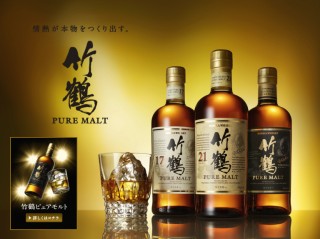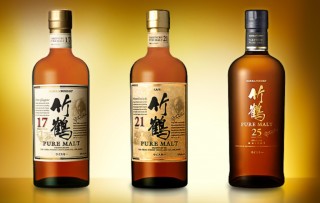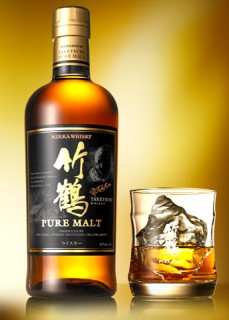Loading
Search
▼ Three Of Japan’s Best Whiskies Are About To Disappear As Nikka Shortages Loom
- Category:Gourmet
Japanese whiskies continue to taste too good for their own existence.
These days, just about everyone knows that Suntory and Kirin make whisky, thanks to their glowing reviews and international marketing muscle (including Suntory’s high-profile placement in Lost in Translation). Ask well-informed Japanese whisky fans, though, and they’ll tell you you’re missing out if you haven’t tried the whisky from distiller Nikka.
Nikka’s founder, Masataka Taketsuru, was the son of a sake maker who bucked the family tradition by moving to Scotland to study chemistry and whisky-making. He returned to Japan with knowledge and experience, plus a Scottish wife, and founded Nikka in Hokkaido in 1934.
The company’s whiskies have since earned a reputation among those in the know for their delicious, authentic flavor, and they’ve now become so popular that three varieties are about to disappear from the market completely.
These days, just about everyone knows that Suntory and Kirin make whisky, thanks to their glowing reviews and international marketing muscle (including Suntory’s high-profile placement in Lost in Translation). Ask well-informed Japanese whisky fans, though, and they’ll tell you you’re missing out if you haven’t tried the whisky from distiller Nikka.
Nikka’s founder, Masataka Taketsuru, was the son of a sake maker who bucked the family tradition by moving to Scotland to study chemistry and whisky-making. He returned to Japan with knowledge and experience, plus a Scottish wife, and founded Nikka in Hokkaido in 1934.
The company’s whiskies have since earned a reputation among those in the know for their delicious, authentic flavor, and they’ve now become so popular that three varieties are about to disappear from the market completely.
Nikka has announced that at the end of March, it will be discontinuing its Taketsuru Pure Malt 17, 21, and 25-year whiskies. As with Kirin’s Fuji-sanroku Tarajuku Genshu 50 and Suntory’s Hakushu and Hibiki, the soon-to-disappear Taketsuru varieties are victims of their own success: Nikka says they simply don’t have enough supply to keep up with demand.
If you don’t drink much whisky (or maybe if you just drank a ton of it, and aren’t thinking so clearly right now), you might ask why Nikka simply doesn’t make more.
If demand is so high, surely they’d sell any extra bottles they produce, right? The numbers for the Taketsuru 17, 21, and 25-years, though, indicate the minimum age of the components that are blended into the bottle, so just having the distillers work double shifts and whip up an extra-large batch isn’t an option.
If you don’t drink much whisky (or maybe if you just drank a ton of it, and aren’t thinking so clearly right now), you might ask why Nikka simply doesn’t make more.
If demand is so high, surely they’d sell any extra bottles they produce, right? The numbers for the Taketsuru 17, 21, and 25-years, though, indicate the minimum age of the components that are blended into the bottle, so just having the distillers work double shifts and whip up an extra-large batch isn’t an option.
As consolation, Nikka will continue to sell its younger, no-age-statement Taketsuru Pure Malt, which will be reformulated about the same time the aged varieties are discontinued. However, if you want the old school Taketsurus, now’s the time to pick up a bottle.
- January 13, 2020
- Comment (0)
- Trackback(0)




